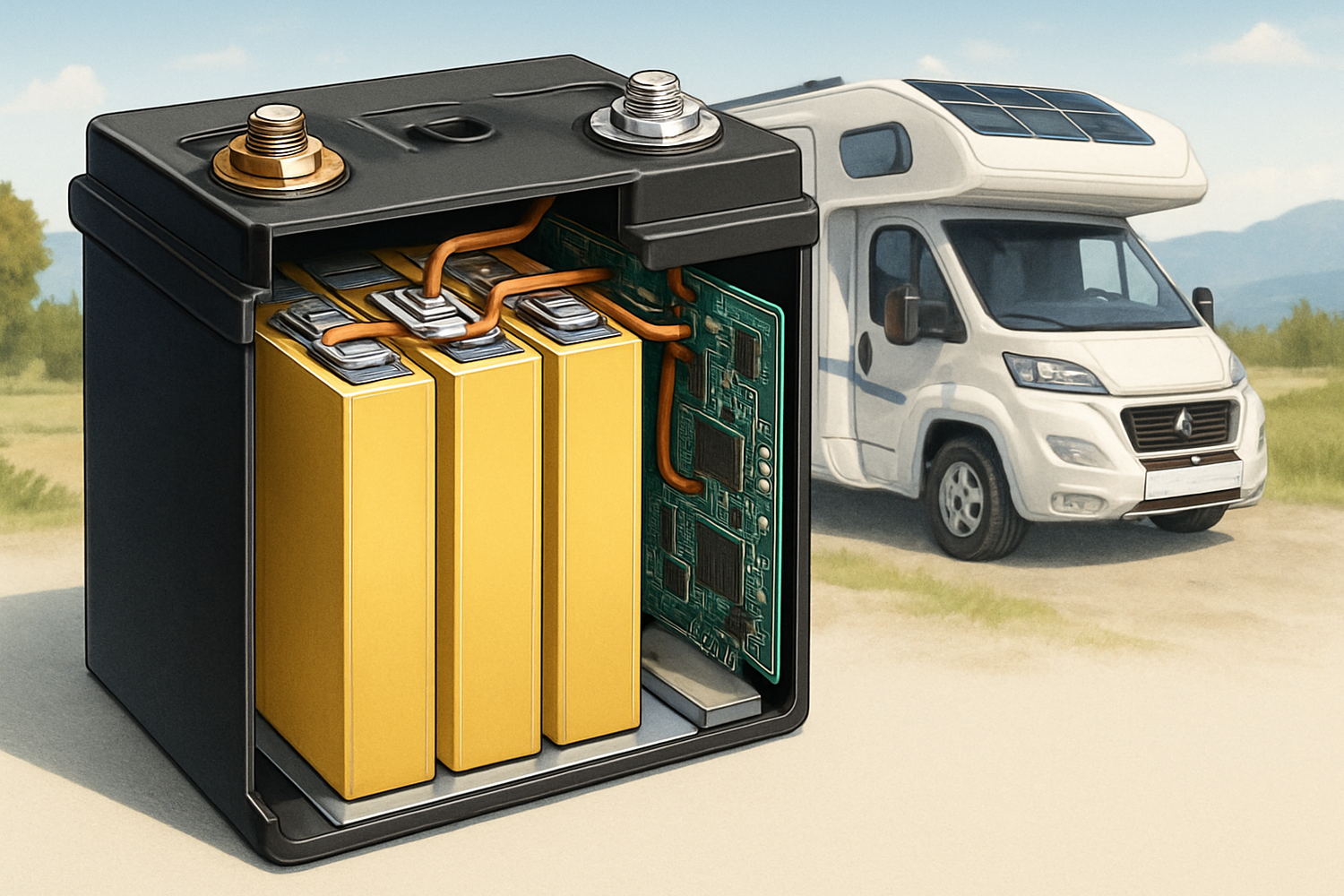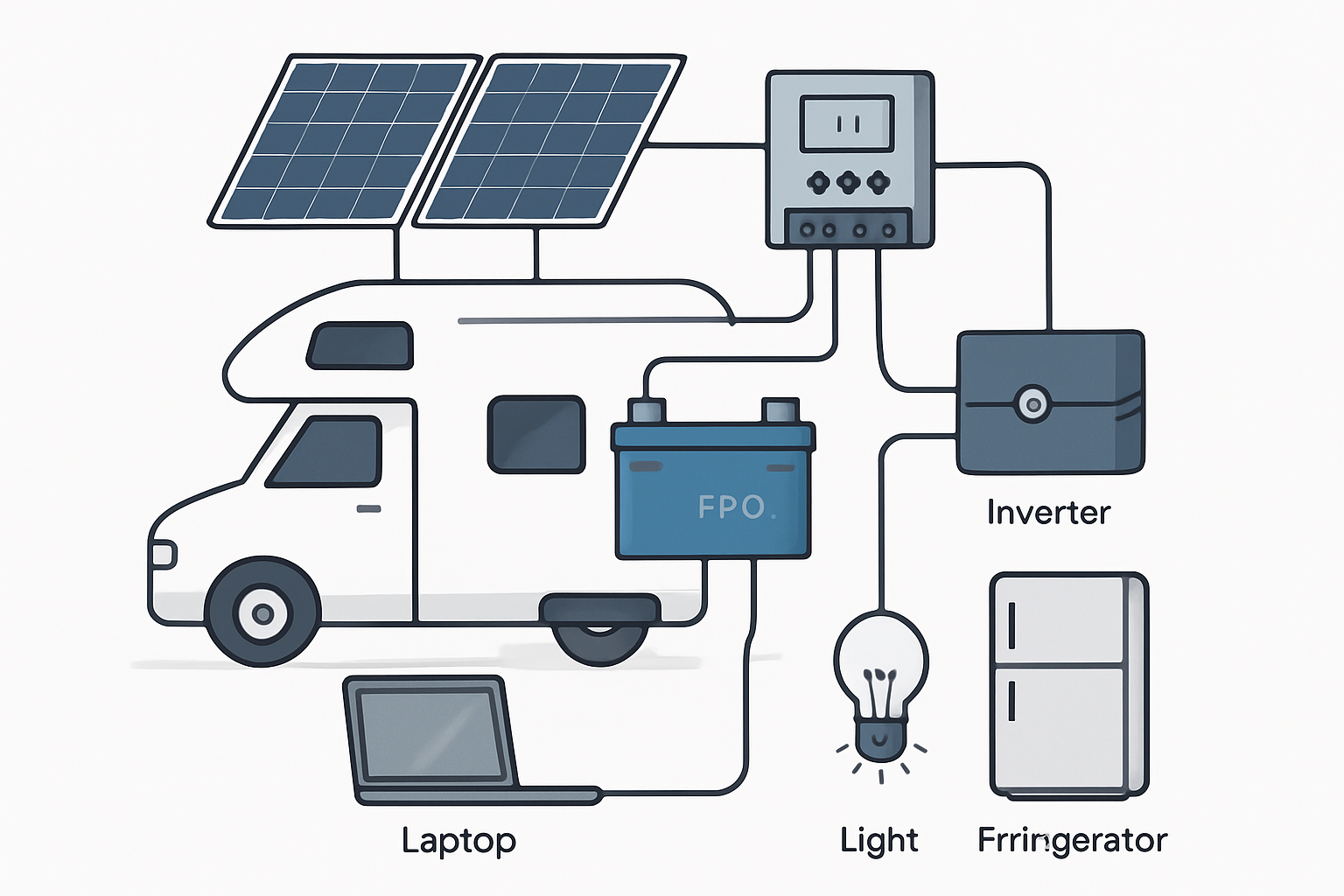The landscape of mobile power is changing. For recreational vehicle owners, the demand for reliable, long-lasting energy has pushed technology forward, moving beyond traditional power sources. At the heart of this evolution is the lithium-ion battery, but not all lithium batteries are created equal. Leading manufacturers are increasingly standardizing on one specific chemistry: Lithium Iron Phosphate, or LiFePO4. This decision isn't based on a single feature but on a compelling combination of safety, longevity, and performance that is perfectly suited for the demands of an RV solar power system.
The Foundational Pillar: Unpacking LiFePO4 Safety
For any product that integrates into a home-on-wheels, safety is the primary consideration. Manufacturers bear the responsibility of providing a product that is not only effective but also fundamentally secure. LiFePO4 technology provides a level of safety that other chemistries struggle to match.
Superior Thermal and Chemical Stability
The core advantage of a LiFePO4 battery lies in its molecular structure. The phosphate-based cathode material is exceptionally stable, particularly at high temperatures. Unlike other lithium-ion variants such as Nickel Manganese Cobalt (NMC) or Nickel Cobalt Aluminum (NCA), LiFePO4 is not prone to thermal runaway, a hazardous condition where a battery overheats and enters an uncontrollable, self-perpetuating heat cycle. As noted in the Innovation Outlook: Smart charging for electric vehicles report, LFP chemistry is considered safer and more stable than high-energy-density alternatives. This inherent stability means it can handle temperature fluctuations and charging stresses without the risks associated with other chemistries.
Reduced Risk in Demanding RV Environments
An RV is a dynamic environment, subject to constant vibrations, shifting temperatures, and the rigors of the road. A battery in this setting must be robust. The stable nature of LiFePO4 makes it the ideal choice for these conditions. Manufacturers recommend it because it significantly reduces the risk of fire or dangerous failures, providing peace of mind for both the company and the end-user. This focus on safety is a cornerstone of reputable product design in the energy storage sector.
Performance and Longevity: A Manufacturer's Perspective
Beyond safety, a battery's performance and lifespan are critical metrics. Manufacturers aim to build products that deliver consistent power and lasting value. LiFePO4 technology excels in both areas, making it a reliable foundation for a high-quality solar energy storage system.
Cycle Life That Outlasts the Alternatives
Cycle life refers to the number of full charge and discharge cycles a battery can endure before its capacity degrades significantly. LiFePO4 batteries offer a remarkable cycle life, typically ranging from 3,000 to 5,000 cycles or more. This is a stark contrast to traditional lead-acid batteries, which may only last for 300 to 500 cycles. This durability means a single LiFePO4 battery can last for a decade or longer, even with regular use. For a manufacturer, this translates to a more reliable product with a lower total cost of ownership for the customer.
Consistent Power Delivery for RV Appliances
A key performance characteristic of LiFePO4 batteries is their flat voltage discharge curve. This means the battery delivers nearly its full power output throughout the discharge cycle. Unlike lead-acid batteries, which experience a significant voltage drop as they are depleted, a LiFePO4 battery will run appliances like microwaves, air conditioners, and electronics at their optimal power level for longer. This consistent, reliable power is a crucial feature for a satisfying off-grid experience and a key reason it's the preferred technology.
The Practical Advantages for an RV Solar Power System
LiFePO4 technology offers tangible benefits that simplify the user experience and enhance the efficiency of the entire RV solar charging setup. These advantages make it easier for manufacturers to deliver a system that works seamlessly.
Higher Usable Capacity and Energy Density
A 100Ah lithium iron phosphate battery offers significantly more usable energy than a 100Ah lead-acid battery. This is because LiFePO4 batteries can be safely discharged to 80-100% of their capacity without damage, a metric known as Depth of Discharge (DoD). In contrast, lead-acid batteries should only be discharged to 50% to preserve their lifespan. This means you get nearly double the usable power from a LiFePO4 battery of the same rating. Furthermore, they are typically less than half the weight, a critical consideration for any RV.
Maintenance-Free Operation
LiFePO4 batteries are sealed and require no regular maintenance. There is no need to check water levels, clean terminals of corrosion, or perform equalization charges. This 'install-and-forget' convenience is a major selling point. For manufacturers, it reduces the potential for user error and minimizes service-related inquiries, leading to higher customer satisfaction.
The Broader Context: Cost, Sustainability, and Market Trends
The decision to standardize on LiFePO4 technology also reflects wider industry trends related to long-term value and sustainability. While the initial investment is higher, the overall picture reveals a more economical and responsible choice.
Analyzing the Total Cost of Ownership
The upfront price of a LiFePO4 battery is higher than that of its lead-acid counterparts. However, its extended lifespan changes the economic calculation. A deeper analysis of solar storage performance metrics shows that the initial investment in LiFePO4 often results in a lower total cost of ownership. Because a single LiFePO4 battery can outlast multiple lead-acid batteries, it saves money over the long term by eliminating replacement and installation costs.
| Feature | LiFePO4 Battery (100Ah) | AGM Lead-Acid Battery (100Ah) |
|---|---|---|
| Average Lifespan (Cycles) | 3,000 - 5,000 | 300 - 500 |
| Usable Capacity (DoD) | 80% - 100% (80-100Ah) | 50% (50Ah) |
| Weight (Approx.) | 25-30 lbs | 60-65 lbs |
| 10-Year Cost Projection | 1 Battery | 3-5 Replacements |
Disclaimer: This table provides estimated values for comparison. Actual performance and costs may vary based on specific products and usage patterns. This information does not constitute investment advice.
A More Sustainable and Ethical Choice
Many common lithium-ion chemistries, like NMC and NCA, rely on cobalt, a mineral whose mining is associated with significant environmental and ethical concerns. LiFePO4 batteries are completely cobalt-free. This makes them a more sustainable and responsibly sourced option. As consumers and manufacturers become more environmentally conscious, this distinction becomes increasingly important. This aligns with a global push towards cleaner energy solutions, where battery storage is a critical enabler, as highlighted by research from institutions like the International Renewable Energy Agency (IRENA).
The Clear Choice for Reliable Mobile Power
The preference among top lithium battery manufacturers for LiFePO4 technology is a decision rooted in a comprehensive evaluation of safety, performance, and long-term value. Its superior chemical stability, extended cycle life, consistent power delivery, and maintenance-free operation make it the ideal energy storage solution for an RV solar power system. By choosing LiFePO4, manufacturers can deliver a product that not only meets the high expectations of today's RV owners but also provides a secure and reliable foundation for achieving true energy independence on the road.
Frequently Asked Questions
Is LiFePO4 technology safe for my RV?
Yes, it is considered one of the safest lithium-ion chemistries due to its exceptional thermal and chemical stability. This structure makes it highly resistant to overheating and thermal runaway, which is why it is favored for demanding mobile applications.
Can I use my existing solar charge controller with a LiFePO4 battery?
It depends. To maximize performance and lifespan, you should use a solar charge controller with a specific LiFePO4 charging profile. Many modern MPPT and PWM controllers include this setting. Always check your controller's specifications to ensure it is compatible.
Why is a LiFePO4 battery more expensive upfront?
The higher initial cost is due to the advanced materials, complex manufacturing processes, and the integrated Battery Management System (BMS) that protects the cells. However, its long cycle life and high efficiency typically result in a lower total cost of ownership over time compared to traditional batteries.





Leave a comment
All comments are moderated before being published.
This site is protected by hCaptcha and the hCaptcha Privacy Policy and Terms of Service apply.